Members of the European Parliament witness the progress of ITER and drill deep in the future challenges of the project
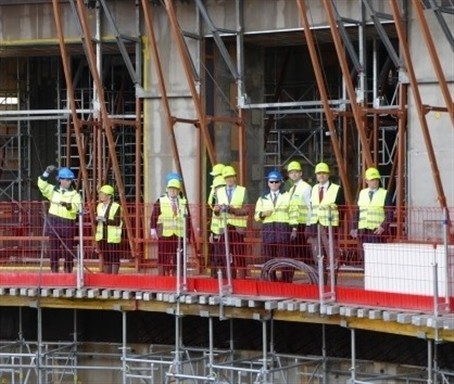

In one of the biggest construction sites in Europe counting more than 1000 workers, Members of the European Parliament (MEPs) in full safety gear of hard hats, yellow jackets and work boots are guided through a maze of concrete and steel. F4E, in cooperation with the European Commission, is hosting a visit to the ITER site of a first group of MEPs of the Industry, Research and Energy (ITRE) Committee.
The visit was attended by Clare Moody (Socialists & Democrats, UK), Christian Ehler (European People’s Party, Germany), Jakop Dalunde, (Greens, Sweden), Flavio Zanonato (Socialists & Democrats, Italy), Eugen Freund (Socialists & Democrats, Austria), and Miroslav Poche (Socialists & Democrats, Czech Republic), rapporteur of the Budgetary Control Committee for the 2015 accounts of the EU Joint Undertakings, including F4E.
The tour on the construction site kicked off at the headquarters of the ENGAGE consortium, the group of companies which has been entrusted with the management of the final design of the buildings and the supervision of the works on-site. The MEPs had the opportunity to discuss with the coordinator of the 3D designs for the technical integration of building infrastructures and systems, a maze of pipes and cables carrying anything from high voltage to all sorts of liquids and gases.
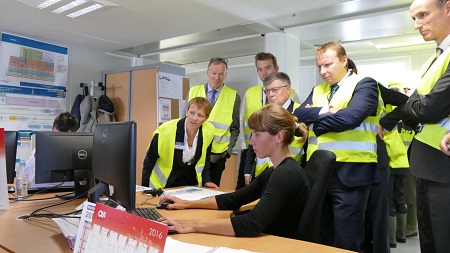
Next on the site tour was the 250-metre long Poloidal Field (PF) coils factory where, due to their impressive diameter and weight, four out of six PF coils of ITER will be manufactured right on site. Following the explanations of the different production stages, MEPs were able to see from close the impressive machinery and tooling used to move objects the size and weight of the PF coils – the largest one being 25 meters high with a weight of 400 tons – with extreme accuracy.
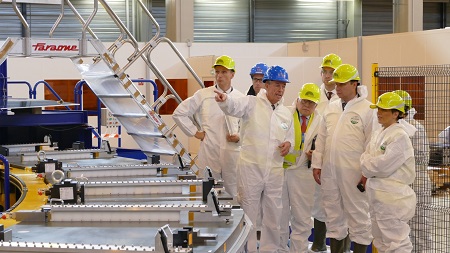
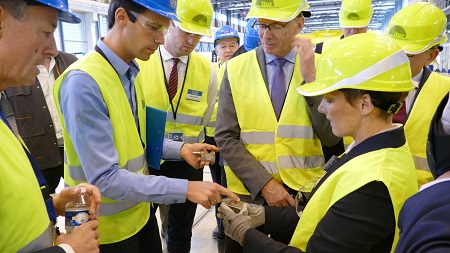
The visit continued in the cathedral-high Assembly Hall, where some of the main ITER components will be assembled by special machines before being moved by the 1500 ton crane to the adjacent Tokamak building for installation. The visit concluded at the core of the Tokamak building where the donut-shaped reactor will be placed. The ITRE members squeezed through the maze of dense steel reinforcements and forms at the 3.5-metre thick and 30-metre high wall of the “bioshield”, which will wrap the ITER device and act as a safety layer between the machine and the building hosting it.
The tour would not have been complete without a visit to the 3D Virtual Reality Room, which allows visitors to enjoy a total immersion inside the machine, examining every detail of the different components and “feeling” their size and complexity.
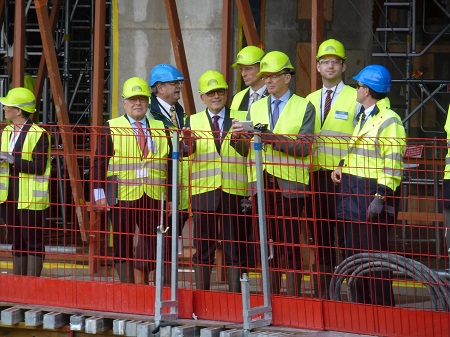
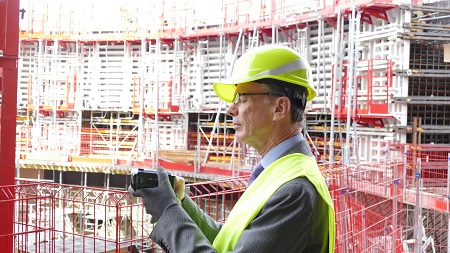
The presentations by Bernard Bigot, ITER Director General, and Johannes Schwemmer, Fusion for Energy Director, covered the benefits of fusion as a potentially limitless, sustainable and safe energy, and the technical achievements and challenges, together with the important changes in the management of the project since 2015. The F4E Director presented in more detail the F4E focus on the first plasma components, as well as the turnaround programme for the organisation.
The members of the ITRE committee showed great interest in the project and acknowledged the importance of continuing the quest for fusion and the construction and operation of ITER. They expressed a clear appreciation for the efforts by ITER IO and F4E to improve the management of the project, to prepare the new schedule and put in place the necessary accompanying resources, to ensure a more effective management of the project and Europe’s contribution. The exchanges between MEPs and the F4E Director also involved the role of European fusion laboratories, the benefits for industry and the impact on companies and SMEs. The resources necessary for the next period of the project were also addressed. MEP Christian Ehler stressed the importance of including contingencies in the project, as had been suggested by the independent review panel, in order to avoid some of the errors of the past.
The discussion took place in a very open and frank atmosphere and ITRE members were thankful to the F4E Director and the European Commission representatives for their collaboration and transparency.
MEP Clare Moody joined all other MEPs in thanking F4E for organising this “very informative and interesting day” and added that she was “very pleased to have visited the construction site of this inspirational project.”